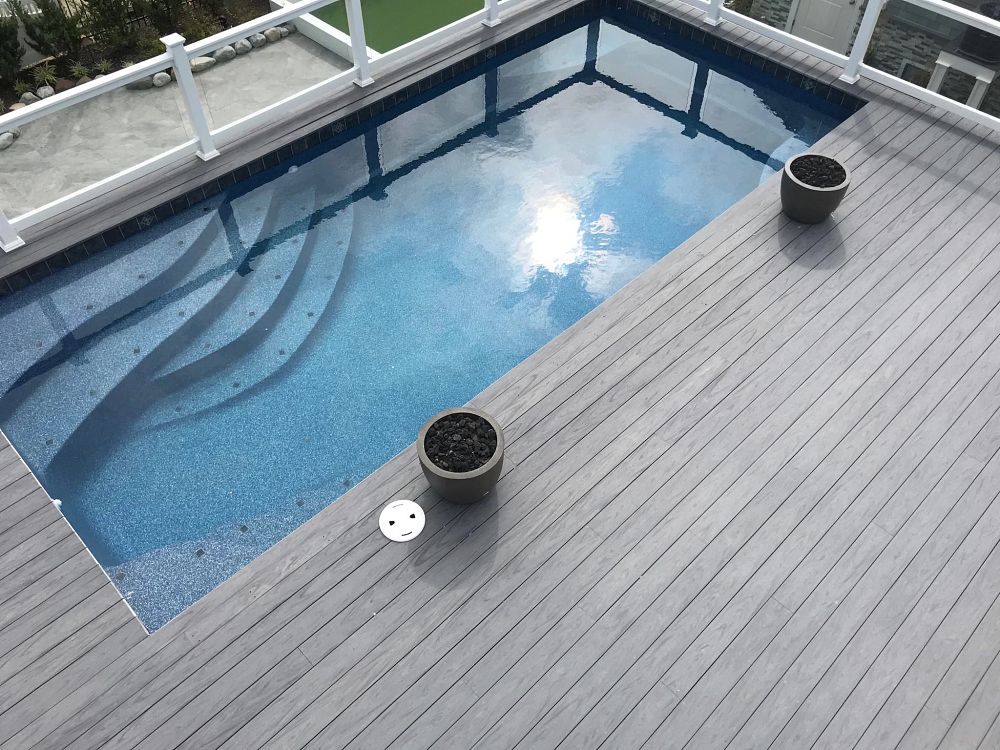Top 5 Architectural Designs That Are Best for Commercial Pool Decks
It’s safe to assume that a pool, whether indoors or out, is universally adored. However, a lot of complexity is involved in designing a commercial collection. Some considerations for commercial pool designers are listed below.
-
Commercial indoor pools compared. outdoor pools in terms of design
The location of the collection will have far-reaching implications. In most cases, it doesn’t matter where a pool is located; most people like one that faces south. This increases the amount of sunlight reaching the reservoir, warming the water.
Indoor pools can be used all year, but they are more expensive to build and maintain. Naturally, most places don’t have warm enough weather to use outdoor pools year-round. Extra care is needed to keep them spotless and functioning properly. If you want to prevent a lot of hassle, consider the pool’s filtration system early in the planning process.
If you’re putting in an outside pool, landscaping is another project you’ll take on. The landscape you choose will directly affect the time and effort required to keep the collections clean and healthy, so resist the urge to go overboard. Don’t plant something that could quickly get out of hand, such as a tree or plant with huge roots. Plantings around a pool should be low-growing, bushy perennials that may be easily moved should the need arise.
-
Determining Why You Want a Pool Target Market
Its intended use will determine several design decisions for the pool. Significant differences will exist in commercial pool decks for workouts and Recreational pools. If your collection is meant for exercise and users will be plunging into the water, it is best to have deeper parts at least along one pool border to make diving safer. Size and form are more adaptable if they are based on the number of swimmers. A la carte pool use is acceptable. Adults are a more forgiving demographic for adaptable swimming pool layouts. If children are the focus or secondary demographic, though, you’ll need to account for a wide range of sizes and swimming skills. The shallower the pool, the more comfortable, the younger swimmers will feel. The design of the pool must take into account the pool’s primary use, which must be established early on.
The challenge comes from the fact that you rarely construct a pool for a particular purpose. The architect’s task is to create harmony among the various functional areas, given that many People will use the space.
Swimming is never enough
When designing a commercial pool, architects often overlook the fact that they need to cater to swimmers and onlookers. The amount of available deck area is an important factor in aquatic layout. Consider the number of spectators, timers, and judges when planning a pool layout, for instance, if the pool is intended for competition. Even if the collection is for relaxation, procedures should be made so that people can talk to one another without getting wet while watching young children play in the water.
Recreational pools require twice as much deck area as the actual pool area. Concession stands will also be housed in that location. You should also consider the visibility of the pool for the lifeguards.
Locker rooms and restrooms should be carefully considered, as even swimmers will spend time out of the water. So that swimmers aren’t forced to walk around when wet, you should allow plenty of room for lockers and position them as close to the pool as possible.
-
Increasing Energy Savings
The design of a commercial pool can simply include eco-friendly elements. The potential negative effects of building a pool on the surrounding environment should be carefully considered. It’s understandable if you’re afraid to add these features but keep in mind that they’ll pay for themselves in the long run by lowering operational costs.
There are solar heating systems, energy-efficient water pumps, window coverings, lighting options, and more. The installation of a pool cover can help reduce the amount of water lost through evaporation. Safer and more environmentally friendly alternatives to the typical chemical water treatments for pools can achieve the same level of cleanliness without the risks.
-
Adding Water Features for Commercial Use to the Design
Swimming pools are already stunning in and of themselves, but the addition of running water can make them even more so. They are more than just for show. If the collecting is for fun, they can enhance that aspect as well. Water jets are a common accessory, but there are other ways to make your water feature design stand out. The earlier you make this decision, the less likely it is that you will have to make any major adjustments down the road.
-
Protection of Swimmers
When constructing a pool, safety measures must be taken very seriously. You must take precautions to reduce risk in making your commercial pool; despite pools being great places to relax and exercise, putting up a fence around the pool effectively prevents unsupervised children from gaining access to the water. To be fair, though, it must be very tall to have any real effect.
There are, of course, several rules that must be followed when planning a business pool to ensure the safety of visitors. Guests must have access to commercial pools through steps, ladders, and railings. In addition, there needs to be a spot for signs warning people not to dive into shallow sections because the floor is slippery when wet. There may be more rules to obey at your pool if it contains features like diving boards or slides.
In conclusion, If you build a business pool with these considerations in mind, it will be a place where people can exercise and have fun. Another important choice you’ll have to make is hiring a reliable commercial pool contractor.



